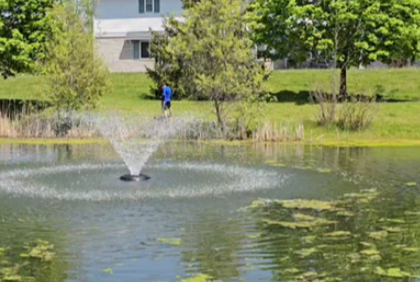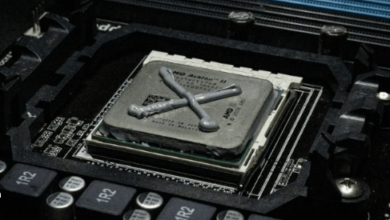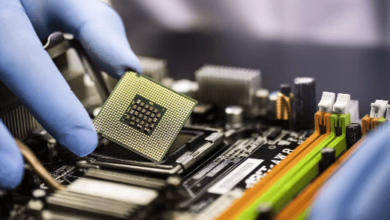Installing an Aerating Pond Fountain: A Step-by-Step Guide

Although it can be fun and interesting to have a pond as a backyard attraction, it must be cared for and managed, most especially to ensure that the water is clean. One of the best ways to achieve this goal is via an aerating pond fountain. These fountains enable the mixing of oxygen with water so as to promote the quality of the water in the ecosystem.
In addition to the benefits gotten from aerating the pond, an aerating pond fountain also provides a beautiful aesthetic value to the pond as it may also serve an ornamental function. In this guide, you will learn how to install an aerating pond fountain for the improvement of the health and aesthetics of your pond.
Step 1: Assess Your Pond Size and Depth
When considering purchasing or installing an aerating fountain, you should first consider the size and depth of the pond in which you intend to use it. Measure the surface area of the pond and identify its maximum depth, as ponds that are larger and deeper may need a stronger pump. In very large ponds, it may be necessary to install more than one aerating fountain.
Types of Aerating Systems
Understanding the types of these systems enables you to choose the right one for the pond.
a. Surface Spray Aerators
These systems integrate the aesthetic aspect with aeration by forming spray patterns, which are suitable for tiny, shallow bodies of water. They work by drawing water from the surface and taking it up into the atmosphere.
b. Subsurface Aerators
Subsurface aeration is achieved by installing air diffusers at the base of the pond. These systems are preferred for deeper ponds since they allow better aeration throughout the water body.
c. Windmill Aerators
Windmill aerators can use the wind to circulate the oxygen in the pond and these are very suitable where there are frequent breezes.
Step 2: Choose the Right Aerating Pond Fountain
Once you have the dimensions of the pond, the next step involves choosing the right fountain for your pond. As we just showed you, there are several types of aerating pond fountains, including surface aerators and also the diffused aeration systems. Surface aerators have an aesthetic appearance and they only provide aeration of water at the surface which might be appropriate for shallow ponds. The diffused systems employ air compressors and diffusers at the base of the pond, which are ideal for deeper water.
Also think about the electricity supply, as most aerating fountains need electricity to work. You also need to make sure that the flow rate of the pump, stated in gallons per hour or GPH, suitably matches the dimensions of your pond.
Even when you use a windmill aerator, understand that several aspects of the environment are affected by wind direction, which may include the flow of water. Ensure that the fountain is not located against the direction of the wind so that it does not blow water from the pond thus wasting water.
Step 3: Gather Tools and Materials
When trying to install an aerating pond fountain, you need a few basic tools and instruments that include:
a. Aerating pond fountain kit. (Depending on the location and setup of the equipment, this could include a power cable and/or extension cords).
b. Floats, anchors or weights (to set the fountain on).
c. Measuring tape.
d. Trowel or small shovel (if the power cord is to be buried).
e. Zip ties or clips to secure cables.
It is always advisable to cross-verify with the manufacturer’s manual for any extra accessories or installation guidelines.
Safety Considerations for Fountain Installation
Safety of the fountain is an important factor that you have to consider when installing fountains. Installation of any kind of electrical equipment attracts certain measures of danger, especially when the equipment is installed outside a building.
a. Electrical Safety
It is also important to make sure that the power cords you are using and all equipment that is part of the power chain are waterproof and designed to be used outside.
b. Child and Pet Safety
If children and/or pets often visit the pond area, then the power cords and any other moving part should be located in a way that they cannot be accessed easily. It is recommended that, if possible, power cords should be buried or put in conduits to avoid tampering.
c. Weather Conditions
To enhance the security of electrical parts from power surges or damage, the aerating fountain should be turned off during a thunderstorm or any other storm.
Step 4: Assemble the Aerating Fountain
Most of the aerating pond fountain kits are usually accompanied with a set of installation instructions. First of all, unpack all the components of the kit, which can include the pump, the nozzle, the float, and the intake screens. Carefully read the product manual and put together the fountain according to the outlined procedures, and tighten all the joints appropriately.
Focus on the pump and nozzle as these are the most important parts that affect the process of water aeration and spraying. Depending on the model, there are usually options to select different nozzles to produce the necessary fountain pattern.
Step 5: Position the Fountain in the Pond
Ideally, the fountain should be located at the middle of the pond in order to allow for sufficient water flow. This helps in the distribution of oxygen in the pond, so that there is no creation of dead centers where algae or debris may accumulate.
To affix the fountain, you can add weights/anchors that can often be found as part of the aerating pond fountain kit. As a result, the device will remain stable regardless of wind or water motion. Some fountains may be floating and will not even need anchors or stakes to be placed in the pond.
Step 6: Connect the Power Supply
After the fountain is placed in the required spot, another important step is to install a power source for the fountain. Ensure the power cord of the fountain is connected to a power source and if the distance is long, you may have to use extension cords. As we showed you earlier, it is recommended to use an outdoor-rated power cord, and you may consider making a shallow trench along the rim of the pond to hide the cord. Another feature to enhance security is to fit a Ground Fault Circuit Interrupter (GFCI) outlet that affords protection against shock, particularly in areas of high humidity.
Step 7: Test the Fountain
It is important to check whether the aerating fountain is functioning well before you leave. After completing the steps above, switch on the power and enjoy watching the fountain in operation. Make sure that the spray height and pattern is as desired. The water from the fountain should flow gently, forming continuous waves on the pond’s surface. In case the spray pattern looks irregular, then the nozzle or the pump settings should be adjusted.
Read more: Boosting Your SEO: A Thorough Guide to Enhancing Google My Business, Citations and Customer Reviews
Troubleshooting Common Issues
As much as you ensure the right installation process of aerating pond fountains, you may come across some challenges when you start operating the fountain.
a. Uneven Water Spray
If the water coming out of the fountain is uneven or irregular, your aerating pond fountains might have deposits on their nozzles. In order to restore even water distribution, remove the nozzle of each fountain and clean it properly. It is recommended to clean the nozzles often in order to avoid debris that may intrude with the spray pattern.
b. Low Water Flow
If there is any sign that the water flow rate seems to be less than usual, it’s time to inspect the pump intake for obstacles preventing water flow, such as algae or leaves. The screens used for intakes should be cleaned often in order to ensure that the operations of the pump are efficient.
c. Pump Overheating
In the event that the pump overheats or shuts down often, it may be operating under low water levels. Make sure that the pond is at the correct depth, and examine the pump and mechanical features for signs of wear or other problems that may affect its efficiency.
d. Algae Growth Despite Aeration
If there is still algae accumulation in your pond after using an aerating fountain, try incorporating other options of maintaining pond water, such as natural algae control or using a UV filter. Integrating several management strategies may help enhance water clarity.
Conclusion
The installation of an aerating pond fountain is perhaps one of the easiest and most efficient ways of enhancing the look of a pond as well as promoting its health. As highlighted in these steps, it is possible for you to install this fountain that will help to provide necessary aeration as well as enhance your garden decor. Keep in mind that maintenance is a key aspect of the fountain system, and proper maintenance will enable you to keep your pond in a perfect state for many years.





